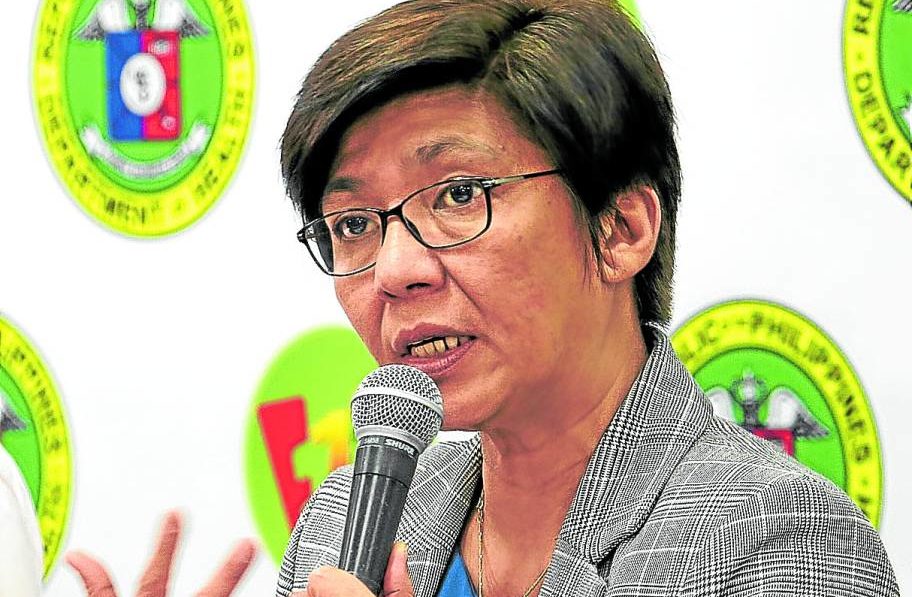4 cases of Omicron BA.5 found in C. Luzon, Bulacan

FILE PHOTO: DOH Undersecretary and spokesperson Maria Rosario Vergeire. INQUIRER FILES
Another Omicron sublineage first detected in South Africa has been found in two residents in Central Luzon with no travel history, according to Health Undersecretary Maria Vergeire.
In an online briefing on Friday, Vergeire said two individuals—a female in her late 30s and a male in his early 50s—were the first two confirmed cases of BA.5 in the country. They were from the same household and were both fully vaccinated and received their booster shots.
According to Vergeire, they developed colds and coughs on May 15 and started their home isolation the next day until May 30. She said they were now asymptomatic and have since recovered.
Couple from QC
Two household members identified as their close contacts are currently in isolation, one of whom also tested positive and is awaiting genome sequencing results to confirm if the individual is also positive for the new subvariant, she said.
A couple from Quezon City had also tested positive for BA.5 after returning to Marilao town in Bulacan province on May 9 to cast their votes in the recently concluded local and national elections, an official said on Friday.
In a phone interview, Dr. Hjordis Marushka Celis, vice chair of Bulacan COVID-19 Task Force, said the couple had not returned to Bulacan since then.
Both of the infected patients, who work in Pasay City, had no history of international travel, Celis said.
She said the man and his wife experienced symptoms of COVID-19 on May 15 or six days after Election Day.
They tested positive for the coronavirus the following day and had gone into home isolation.
On May 26, while still on home isolation, they tested positive for Omicron BA.5.
More transmissible
Celis said the two had already recovered from COVID-19 and had no known close contacts in Bulacan.
BA.5 is the third sublineage of the globally dominant Omicron variant to be confirmed in the country in the past month. The other two were BA.2.12.1, which was first found in Metro Manila, and BA.4, which was detected from a returning overseas Filipino who flew in from Qatar.
The World Health Organization classifies BA.4 and BA.5 as “variants of concern-lineages under monitoring,” which is defined as those “tracked under Omicron unless sufficient evidence arises that the virus characteristics are substantially different” from the original form of Omicron. Both BA.4 and BA.5 were first detected in South Africa in January this year.
According to Edsel Salvana, infectious disease expert and a member of the Department of Health technical advisory group, BA.5 is about 10 to 30 percent more transmissible than the “stealth subvariant” BA.2, which caused surges in many countries. “There are concerns that BA.4 and BA.5 drove the fifth wave of cases in South Africa, but [cases] dropped again and it’s like a third or a fourth of the peak of the original Omicron,” Salvana said.
RELATED STORY:
For more news about the novel coronavirus click here.
What you need to know about Coronavirus.
For more information on COVID-19, call the DOH Hotline: (02) 86517800 local 1149/1150.
The Inquirer Foundation supports our healthcare frontliners and is still accepting cash donations to be deposited at Banco de Oro (BDO) current account #007960018860 or donate through PayMaya using this link.